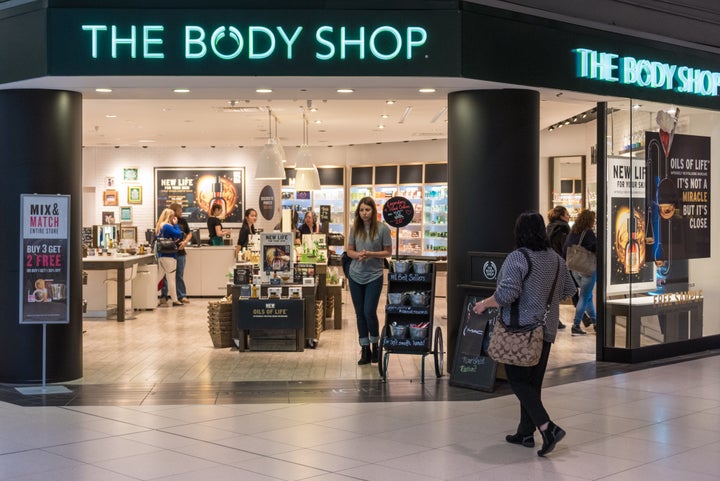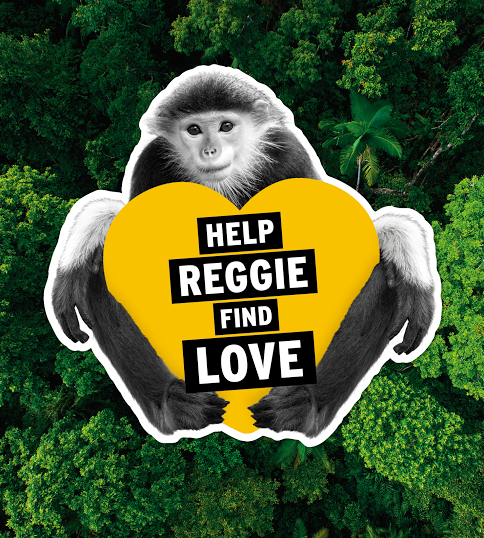
To once again be the go-to cosmetic store for environmentalists, the Body Shop needed more than buttery moisturizers made with ethically-sourced ingredients and a history of political activism.
It needed to become, in part, an animal dating service.
The 40-year-old chain on Wednesday announced the first phase of a sweeping plan to overhaul the L’Oreal-owned company into an environmental powerhouse, harkening back to its heyday when it led the charge to get animal testing banned across Europe. That includes buying up swathes of land in biodiverse regions to connect natural habitats severed by deforestation.
In forthcoming promotional materials, the company plans to tell the story of a red-shanked douc named Reggie who finds a mate only after the Body Shop and its local nonprofit partner help bridge two islands of jungle in Vietnam where the monkeys live.

“The key thing for the Bio-Bridge project is to regenerate and protect the land,” said Chris Davis, who heads corporate responsibility and campaigning at the Body Shop, referring to the plan to buy up to 75 million square meters of blighted land. “You find resettlement and you find the genetic pool of the animals enriching because these separated communities are able to live and interact.”
That’s one part of the plan.
The Body Shop also sent teams of scientists to tropical locales to identify at-risk plants that it could use to make a new cosmetic product due out next year, therefore incentivizing farmers to keep growing the species.
It’s doubling the number of ingredients -- from 19 to 40 -- that it sources from its long-standing network of indigenous farmers in developing countries who use eco-friendly growing methods, bringing in roughly 40,000 “economically vulnerable” workers. The company is also slashing its carbon footprint by reducing energy use in its roughly 2,500 stores and plans to power all of them with renewable energy or energy with a carbon-neutral footprint.It's also developing plastic packaging that, rather than producing air pollution in its manufacturing process, is produced from air pollution.
It’s all part of an epiphany CEO Jeremy Schwartz had on the banks of the Amazon River last February, during a trip to Peru to scout new ingredients and farming communities. For the last two years, the executive, who took charge of the company in 2013, had been strategizing a way to bring the Body Shop back to its activist roots. The idea that came to him boiled down into the company’s new three-word marketing mantra -- “enrich, not exploit.”
Under the 26-year stewardship of founder Anita Roddick, a British socialite and environmentalist, the Body Shop flourished as the leading company “retailing with a conscience” on a huge scale. The company sourced its ingredients mostly to farmers who use eco-friendly growing methods. In 1993, the retailer banned all products tested on animals. Three years later, it gathered 4 million signatures on a petition to end cosmetic testing on animals in the European Union. By 1998, the ban passed in the United Kingdom. By 2004, it went into effect across Europe.
But by the early 2000s, the company had lost its edge. Bigger, deeper-pocketed rivals jumped on the natural products bandwagon and gobbled up the Body Shop’s share of the market. Roddick and her co-founder husband ceded control over the company to its new chief executive Patrick Gournay, who quickly cowed to profit-hungry investors. The store, which once offered products you could feel good about buying, suddenly was focused more on products its new leaders thought people were more likely to purchase -- ingredients be damned.
The announcement of the company’s new “commitment,” as the firm is calling it, is meant to mark a return to its earlier values. That, in part, means ramping up old pledges.
By 2020, the company plans for 100 percent of its ingredients to be traceable and sustainably sourced -- up from about 40 percent today. It plans to be transparent, publishing information about all of its ingredients and providing regular reports on the biodegradability and water footprint of its products.
Plus, like many companies, it’s weaning itself off carbon. Using new plastics -- such as body butter containers and bottle lids made from methane gas captured from farms -- the company wants to ensure that 70 percent of product packaging is not produced by burning fossil fuels.
The next phase will be premiering a new political campaign, like the one used to ban animal testing. The company declined to comment on what the campaign will focus on, but said it expects to start organizing activists sometime next year.
“We are small, but we lead,” Schwartz said in a statement. “For us, being truly sustainable means shaping our business to work in line with the planet’s natural systems so they can replenish and restore themselves.”

